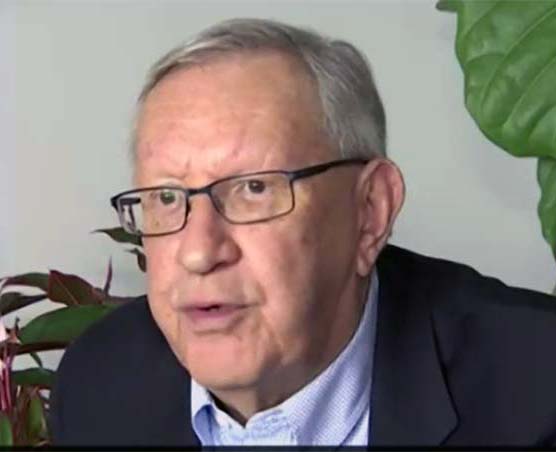 While North America is sweltering in 80- and 90-degree temperatures, the bottom half of the world is descending into an early winter. That means lots of June and July snow in the Andes stretching along the rugged border between Chile and Argentina.
While North America is sweltering in 80- and 90-degree temperatures, the bottom half of the world is descending into an early winter. That means lots of June and July snow in the Andes stretching along the rugged border between Chile and Argentina.
And lots of skiing.
After a 10-hour flight on LAN Airlines, from JFK to Santiago, Chile beckons. The white-capped mountains rising in the east soar above the silhouettes of the modern skyscrapers of Chile’s capital city. The snow-covered peaks appear almost painted against a glowing gray morning sky as we began the drive into the central Andes foothills.
The central city traffic quickly tapers off as the road to Farellones twists out of the city limits up a narrow valley between dusty, rocky hills dotted with cacti, brush and the occasional pine. Aloe plants line the dirt shoulders of the two-lane road along with painted shacks crowned by corrugated steel roofs.
Here and there a Chilean cowboy silently rides his horse across the dry mountainside while trucks grind and groan their way around the steep curves. In the lower valleys houses ranging from the simplest hut to glass palaces cling to steep cliffs perched above a sleepy stream.
 After about 45 torturous switchback curves the town of Farellones serves as a gateway to a trio of resorts, La Parva, El Colorado and Valle Nevado. We were heading up the last 30 tight and winding curves to Valle Nevado, an isolated angular resort built in the middle of a vast snowfield at 10,000 feet above sea level — only 90 km. and an hour-and-a-half from the Santiago airport.
After about 45 torturous switchback curves the town of Farellones serves as a gateway to a trio of resorts, La Parva, El Colorado and Valle Nevado. We were heading up the last 30 tight and winding curves to Valle Nevado, an isolated angular resort built in the middle of a vast snowfield at 10,000 feet above sea level — only 90 km. and an hour-and-a-half from the Santiago airport.
The resort itself is modeled on the French resorts built purely for pursuit of snowsports like Les Arcs and Courchevel. The modern buildings stand starkly against the white snow background and soaring 17,000-foot peaks. From every side of the three Valle Nevado hotels that make up this resort, trails beckon and lifts rise that open some of the most far-flung skiing and snowboarding terrain in the western hemisphere.
 The Valle Nevado mountain statistics are staggering from a North American point of view — more than 22,000 acres with a lift-served vertical drop of more than 2,500 feet. The peaks surrounding the resort are higher than any mountain in Europe. This big mountain skiing and riding is laid out for a maximum of around 1,800 other skiers or snowboarders on the mountains on any given day.
The Valle Nevado mountain statistics are staggering from a North American point of view — more than 22,000 acres with a lift-served vertical drop of more than 2,500 feet. The peaks surrounding the resort are higher than any mountain in Europe. This big mountain skiing and riding is laid out for a maximum of around 1,800 other skiers or snowboarders on the mountains on any given day.
Trails drop through mostly unmarked snow from Tres Puntas or through Valle del Inca at the end of the Poma lifts. Those who like their snow groomed can find expert and intermediate trails winding down from both of these peaks. The intermediate heart of the resort is served by four chairlifts just to the west of the hotel complex. Children and beginners have their own private section of the mountain.
Life here surrounded by deep snows is an international affair. Brazilians, Chileans and Argentines dominate the crowd staying at Valle Nevado. Americans make up about 15 percent of the visitors and a handful of skiers and snowboarders from Europe add new languages to the mix.
 After sunset, restaurants serve fondues from Switzerland, pasta from Italy, escargot from France and local cazuelas from Chile. The Pub is buzzing with a half dozen languages and the dance floor fills for top cover bands. The only common denominator is an international love of snow and the mountains.
After sunset, restaurants serve fondues from Switzerland, pasta from Italy, escargot from France and local cazuelas from Chile. The Pub is buzzing with a half dozen languages and the dance floor fills for top cover bands. The only common denominator is an international love of snow and the mountains.
As with any ski or snowboarding vacation, the biggest bang for the buck is during the early season and late season. In Chile that means the last two weeks of June and the last three weeks of September. High season in Chile at any resort is during July and August.
This is not a third-world bargain vacation as anyone researching packages will quickly find out. Prices in Valle Nevado are comparable to those found at ski and snowboard resorts in the United States and Canada. For more information, start planning at www.skisnowboard.com.

Charlie Leocha is the President of Travelers United. He has been working in Washington, DC, for the past 14 years with Congress, the Department of Transportation, and industry stakeholders on travel issues. He was the first consumer representative to the Advisory Committee for Aviation Consumer Protections appointed by the Secretary of Transportation from 2012 through 2018.

